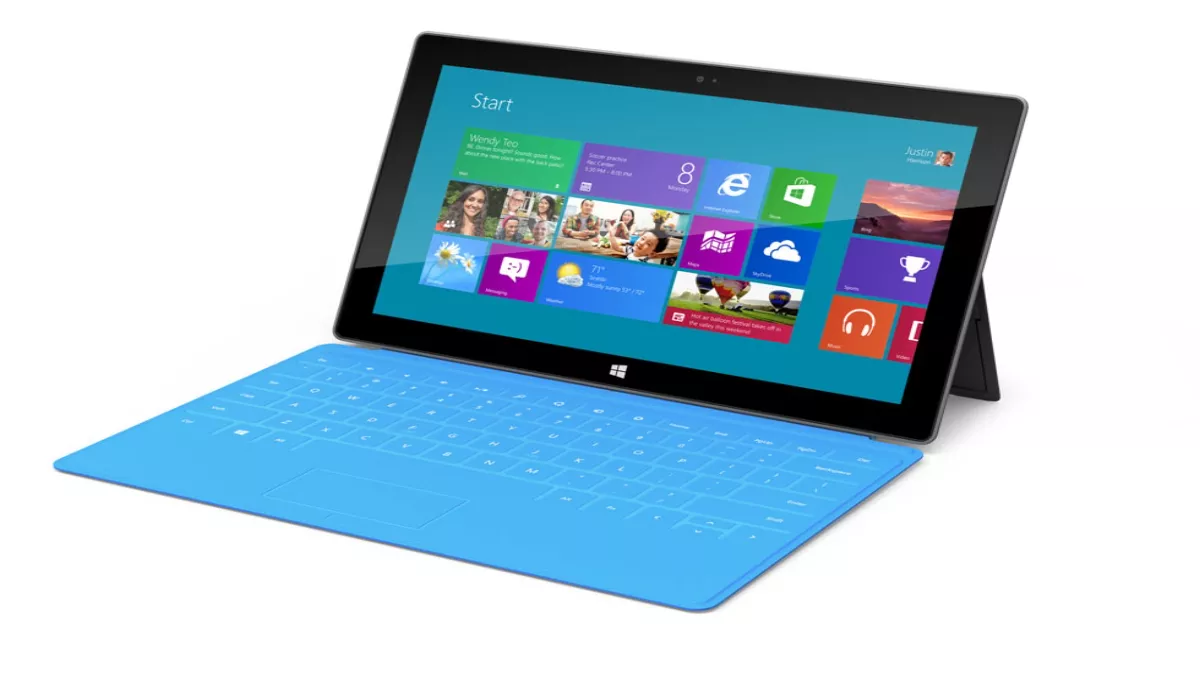
Opinion: Microsoft’s massive gamble
The rumour mill is cranking it up a few levels around the imminent release of the Microsoft Surface RT tablet. The latest whispers indicate that the gadget may be priced at as little as US$199.00; that’s courtesy of the authoritative UK news site The Register.
The Surface is Microsoft’s Johnny-come-lately to the burgeoning tablet market, where just two blocs which any sort of success have emerged: that around Silicon Valley behemoth Apple; and that around (the other Silicon Valley behemoth) Google’s Android. At the same time, plenty of other pretenders have come and just as quickly gone, among them HP and Research in Motion (RIM).
Let’s take a quick look at the HP TouchPad and the BlackBerry PlayBook, before they recede so far into history as to be outside the reaches of living memory. The TouchPad was launched on 1 July, 2011…and discontinued in August. From an initial price of US$500, a few weeks later it was difficult to give the things away.The PlayBook fared slightly better, but is still a horror story for beleaguered RIM. Introduced in April 2011, the device sold so slowly that RIM took a US$485-million hit. By March 2012, just one million of the gadgets have found their way into the hands of end users, ‘commanding’ a little over 3% of the total tablet market. RIM hasn’t abandoned the PlayBook yet, clinging tenaciously to the device; while it does so, Apple has sold some 55 million iPads.
Consumer savvy
But what’s this to do with Microsoft? Well, quite a lot, actually. It demonstrates the competitiveness of the tablet market which has, for even those hardware manufacturers with venerable reputations and quality products, proven a notoriously hard nut to crack. It’s made harder for Microsoft by some further observations; notably, on the fleeting career of the HP TouchPad, the company’s CTO Shane Robison noted that the gadget "was half a generation or a generation behind the iPad and so that wasn't going to drive volume."
The Surface is three or four generations behind Android and Apple.
This is a punishing market. Windows-powered tablets are not unknown, either, but Windows-powered tablets have proven spectacularly unsuccessful for the likes of Dell - expensive, heavy, designs limited by the bloaty nature of an operating system designed for an altogether different device, and a million miles away from the app stores and ecosystems which make Apple and Android tablets so attractive to consumers.The Surface, on the other hand, is a brand new device, with a brand new operating system. From a software, not hardware, manufacturer; and one with a history of buggy operating systems to boot. Indeed, when Microsoft makes major changes to its desktop operating systems, ‘don’t implement until at least service pack 1 is out’ is considered sound advice. Windows 8 is looming; the initial ARM processor-powered ‘RT’ versions of Microsoft’s tablet will be first to market, with something of a stripped down version of the operating system that nobody is allowed to call Metro (any longer).
High stakesBy now, the risks should be obvious, in terms of likely consumer reception. But wait, as infomercials have taught us, there’s more. Microsoft’s success in part rests on its own ecosystem of OEMs; it makes the software, the OEMs make the hardware (yes, that is a dramatic oversimplification). Those OEMs include companies like HP, Asus, Acer, Dell and many, many more.
The risk faced by Microsoft ratchets up even further as it is now in effect competing with its partners - and competing with an ace up its sleeve, too, since those partners are all hamstrung by a license cost (for Microsoft’s operating system) that it doesn’t have to bear itself. Acer’s Chairman JT Wang has already voiced his disapproval, asking Microsoft to ‘think twice’ about its Surface plans.
The rumours of a price as low as US$199 may be the first sign that Microsoft has blinked. Regardless of final pricing, what is abundantly clear is that Microsoft will need to sell these things and sell them fast (remember those 55 million iPads and the ecosystem that represents, against which it is going up). It is entering a cutthroat market which is a darn side more mature now than it was when the first iPad hit the shelves just 30 months ago. In short, this is a massive gamble for Microsoft - and gambling doesn’t always reward the bold.

